CHITWAN NATIONAL PARK LOOKS FOR BETTER DAYS
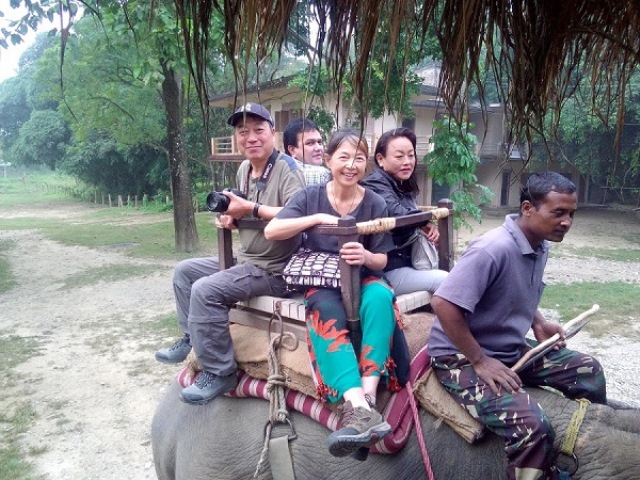 |
| Never miss an opportunity to have an elephant ride in Chitwan National Park. Photo: The Writer's Dane |
(This article was originally published in The Rising Nepal)
My recent itinerary was a tour from Pokhara to Lumbini and
Chitwan National Park on motorbike. After having spent two days in Lumbini, I
directly headed to Chitwan National Park. From Bhairawa I took a shortcut route
to catch the main highway to reach Chitwan National Park.
After a bumpy motorbike riding from Pokhara to Butwal, a
smooth ride from Butwal up to Chitwan National Park was a pleasant experience. Right
before entering Chitwan National Park, there was a large hoarding board with
some information about the Park. At the bottom of the board, there was a large
arrow showing the way to Chitwan National Park. Within a few minutes, I found
myself in Sauraha. I lodged at a hotel from where I could see a beautiful view
of the Rapti River. The Sun was setting and its glow appeared serene and
aesthetically beautiful.
There was a time when Chitwan National Park was a favorite
hunting ground for Nepal’s ruling class, who would stay in the forest and shoot
tigers, rhinos, leopards and sloth bears as a part of their adventurous hobby. Moreover,
the Ranas would invite royalty from Europe and princely states of India to
participate in days or sometimes, even months’ long hunting trips.
Things changed and in 1973, Chitwan National Park officially declared
the first national park of the country. It was granted the status of a World
Heritage Site in 1984. It covers an area of 932 km2 of Chitwan district,
which lies between the Narayani and Rapti rivers to the north and the Reu River
and Nepal-India international border in the south. Chitwan National Park is
best known for one horned rhino but there are tigers, elephants, crocodiles and
myriad species of birds. As far as its vegetation is concerned, about 70% land
of Chitwan National Park is covered with Saal trees and 20% land is covered
with grasslands. The Park is also known for 50 different types of grasses, many
of them are not available in other parts of the country. One popular grass is
Elephant Grass, which grows as tall as 8m. Among others, the park is the home
to more than 50 mammal species, over 525 birds and 55 amphibians and reptiles.
Four horned antelope, Pangolin, Golden monitor lizard, Python, Giant hornbill,
Black stork, and White stork are also the proud assets of the Park.
In fact, the entire area of Chitwan National Park is suitable
for different species, but alluvial flood plains provide an ideal habitat for
the great one-horned rhinos. Not only rhinos but Bengal tigers are also
thriving in Chitwan National Park. The population of tigers and rhinos has been
regularly increasing in Chitwan National Park. In 1980, there were only 300
Rhinos, but this number further increased to 503 in 2011. Similarly, there were
only 40 tigers in 1980s but this number reached to 125 in 2010.
All photos by LB Thapa
It is good to know that Nepal Army has taken up cudgels in
their hands for protecting the wildlife of Chitwan National Park since 1975.
Nepal Army has been doing remarkable job to keep poachers away from the jungle
and therefore wildlife and natural resources are safe and secured. Efforts have
been made to bring local people’s involvement in conservation and the benefits
are given to people living in the buffer zone. In brief, it can be said that
Chitwan National Park has become an example of Government-Community partnership
in biodiversity conservation.
Local handicrafts are much popular among the tourists at
Sauraha, the main tourist town in Chitwan National Park. Clothes made on handlooms
and several wood & bamboo items are always the first choice of tourists. In
addition, Mirgakunj Consumers Committee, Chitwan (MCC) has been encouraging
local artisans by giving them training from the professionals. Many of these
artisans work hard to hone their skill for making quality wooden rhinos and
elephants. “The training has taught us how to make well crafted rhinos and
elephants. However, finishing is the matter. For that, it demands years of hard
work and patience to bring quality into the work. Wooden rhinos and elephants are
very popular among the tourists in Sauraha. Many Nepali and foreign tourists
buy those wooden rhinos and elephants at good price”, said Indra Karmacharya, a
local artisan in Sauraha.
Speaking with this scribe, Karma Lama, a senior artisan and
the owner of Natural Handicraft Shop, said: “I have all kinds of rhinos and
elephants---smaller one to big one. Last year I sold one big wooden rhino at
Rs.45,000 to a German tourist. Mostly Nepali visitors purchase smaller rhinos
and elephants whereas foreigners prefer to buy big ones”. Mr.Lama has been working
as a local artisan for the last 25 years in Sauraha.
Elephant riding is the main attraction of Chitwan National
Park. Majority visitors to Chitwan National Park never fail an elephant ride. However,
the visitors can also go for boating along the Rapti River, or a Jeep ride that
meanders through the Park can also bring lots of excitement for the tourists.
This scribe too had a wonderful time to have an elephant ride. A ticket has to
be bought at Rs.1400 and only four persons are allowed to sit on the back of
the elephant at a time. The elephant stand is about 3km away from the main
tourist bazaar. There are two stands from where tourists can board on the back
of the elephant. The mahout helps the tourists to sit properly so that four passengers
can sit comfortably. The mahout asks the passengers to keep the corner pole
between their two thighs and hold the upper bar strongly. I was with the three
Chinese passengers. I tried to speak with them but they replied in Chinese,
then I courteously said ‘Ni how ma’ with an enigmatic smile on my face. Within
ten minutes of ride, we reached an open ground in the dense forest.
There were about four more elephants with their passengers.
The elephants began grazing in the green grass in a group---we waited for about
15 minutes. When asked our mahout said, “We are waiting for a phone call from
our friends who are already inside the jungle. They will inform us as soon as
they spot rhinos”. Even after 20 minutes of waiting, they received no phone
call from other mahouts. Then all the mahouts decided to march into the forest.
The forest was extremely dense. “Bend your heads low and protect your face from
the branches of trees,” instructed our mahout.
The elephant took us deep inside the jungle. There was not a
fixed path for the elephants. The elephant would walk wherever mahout directed.
Though we tried our best, it was extremely difficult to avoid those nasty branches
and overgrown bushes. I got some bruises on my hands and my Chinese co passengers
too. However, the excitement and adrenalin rush made us feel no pain from those
bruises. However, even after spending over one and half hours in the forest, we
could not see a single tiger or a rhino; but yes, we saw several other animals
and many beautiful birds, which we had never seen before.
We returned to the same grassy land where four elephants had assembled.
We requested the mahout to let the elephant eat grass so that we could take
pictures of a heard of beautiful deer---he agreed. I was so surprised when
mahout said that each adult elephant cost nearly seven to ten million rupees.
“These elephants are very expensive and there are well trained people to take
care of them. We need to provide them healthy foods rich with various minerals.
Most of these elephants are purchased from India,” added the mahout.
Grappling with problems
While talking with different tourism entrepreneurs in Sauraha,
I found anger and disappointment among them due to lackluster attitude of the
government by not constructing Narayanghat-Mugling highway road. Due to
extremely bad condition of the road, many foreign and Nepali tourists are not
going to Chitwan National Park. They go to Pokhara and other places instead. This
scribe did go through the road and I can tell the world about the horrible
experience I had. The clouds of dust were so thick that even in afternoon all
vehicles had switched on their headlights, as the visibility was extremely
poor. After having reached Mugling, I vowed not to travel by the same road until
it was blacktopped. I can better understand why the flow of tourists to Chitwan
National Park has plummeted so drastically. (Now
road between Mugling to Narayangarh has been constructed, but when this article
was published for the first time in The Rising Nepal, the road was not
blacktopped).
One more enemy of the Park is pollution. Increasing amount of
pollution in the Narayani River has adversely affected the aquatic ecosystem of
Chitwan National Park. Many industries dump their waste in the Narayani and so are
true with residential houses, which produce tons of garbage and throw in the
river.
One of the most serious issues with the Park is poaching.
Poaching has always posed a serious threat to wildlife in Chitwan National
Park. Every possible step should be taken to curb the cases of poaching and
stealing of timber---Chitwan is the home for precious saal trees. Poachers and
timber thieves must receive strict punishment including confiscating their
property. This will make them think twice before committing such crimes.
“Poachers and timber thieves develop their contact with the corrupt leaders and
high-ranking officials and kill endangered species to smuggle out their body
parts. Poachers are only tiny fishes; the sharks are roaming free and they are
never arrested. Even if they are arrested, they are let off cheaply”, said one
of the Park authorities on condition of anonymity.
The Park authority and the local people must cooperate with
each other for the safety and security of wildlife and timber. In the meantime,
the Park authority should pay compensation on the damage of crops and livestock
at the earliest possible. When this scribe spoke with the local people of
Meghauli, they said that the compensation they receive for the loss of their
cattle and crops is too little and too late.
Yet another aspect of this problem is Human-wildlife
conflict. Many people live in the buffer zone of Chitwan National Park, which
spreads around 750 km2. Local people grow seasonal vegetables and
crops. To meet their basic needs they also raise livestock. Many times rhinos,
elephants and tigers encroach into human settlements and wreck havoc. At times
when tigers and leopards do not get enough food in the wild, they turn to
cattle and sometimes on human beings as well.
Meghauli lies at the closest proximity of the Park. As a
result, the village is more likely to receive wildlife attacks. This village
shares 25km of its border with Chitwan National Park. In the past 20 years,
about 30 tigers have killed around one hundred people in an area of 766 square
kilometers. This is an alarming situation and the concerned Park authority must
find a concrete solution than some patch ups.
If the Park and the local people have healthy relationship,
incidences of poaching and stealing timber can permanently be stopped. Without
direct involvement of the local people, wildlife and timber can never be safe
and secured in Chitwan National Park.
Thank you
very much for reading this article. I hope you liked this article. I will be
glad if you take little time and make a comment about this article. Your
comment is highly appreciated.
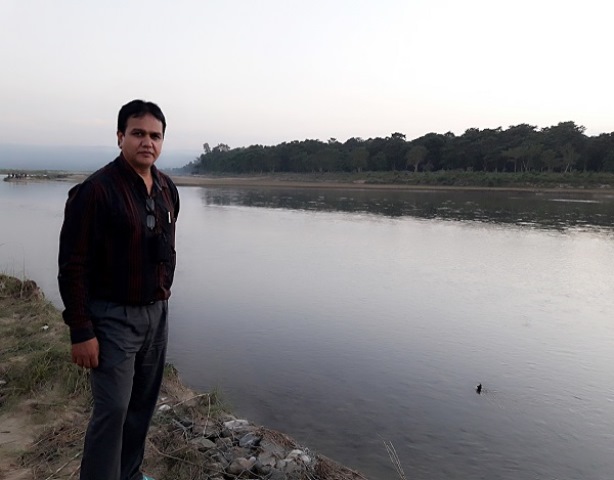 |
| I stand by the side of the serene Rapti River at Chitwan National Park. Photo: Goma Gurung |
LEGAL WARNING
All rights reserved. No
articles and photos published in this blog can be reproduced without the prior
written permission of the author. Legal action will be taken immediately if any
articles or photos are reproduced without the author’s knowledge. However,
articles or photos can only be reproduced by duly mentioning the author’s name
and the blog's name (read2bhappy.blogspot.com). The author must be informed by
sending an email. All articles and the photos published in this blog are the
copyright property of LB THAPA
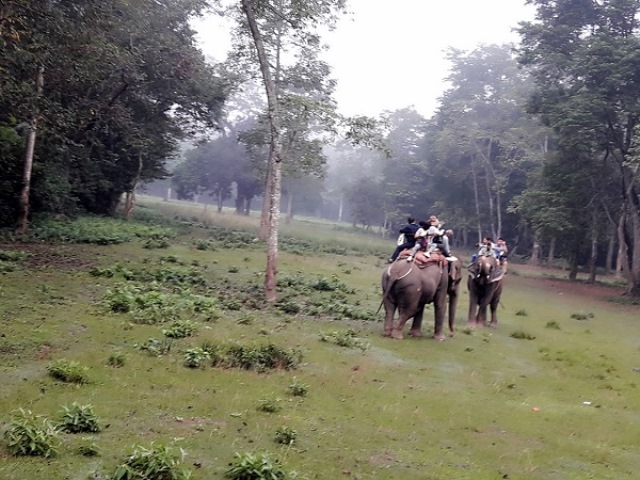
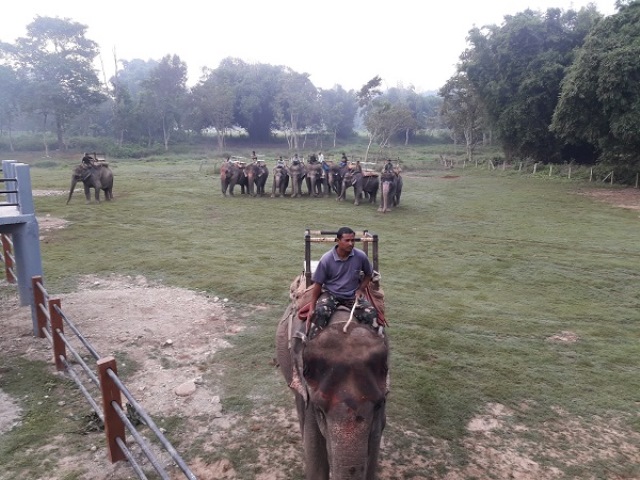
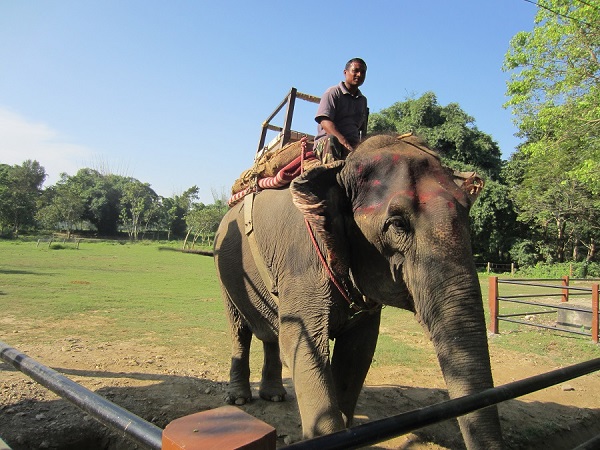
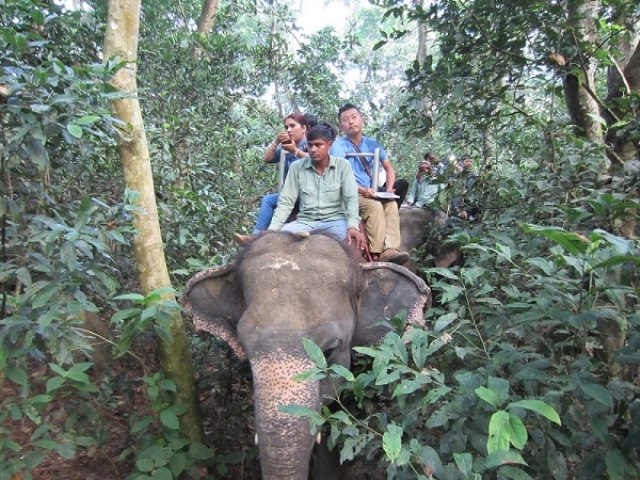
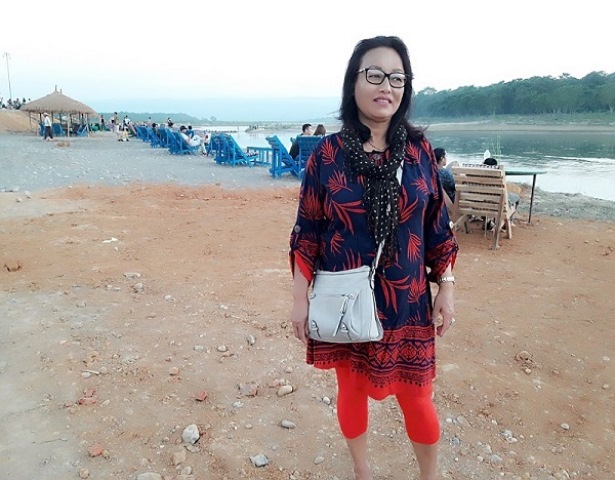
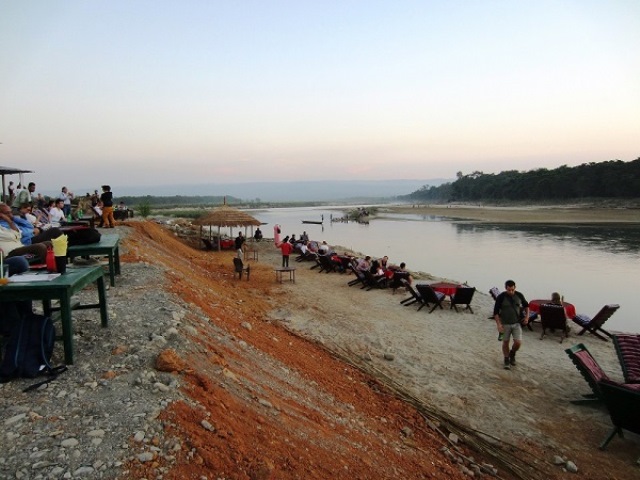



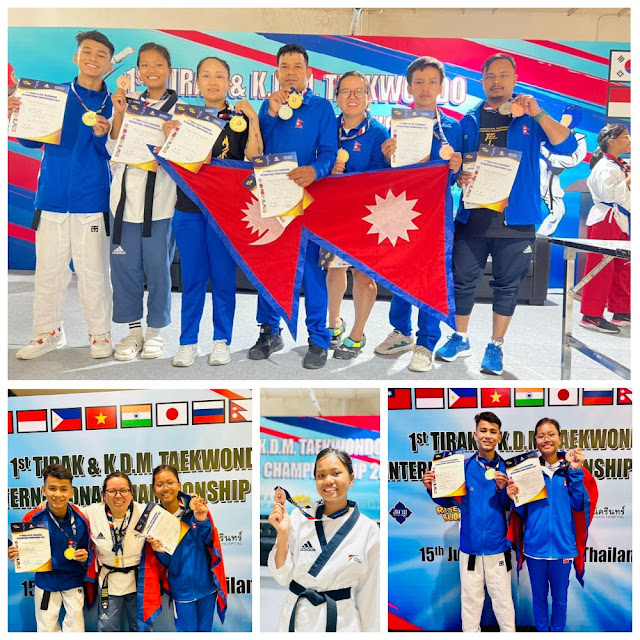

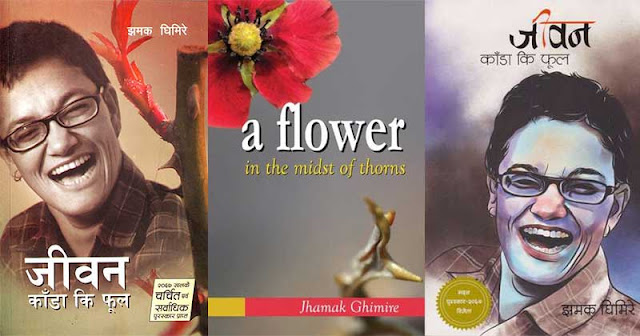



.png)
Comments
Post a Comment